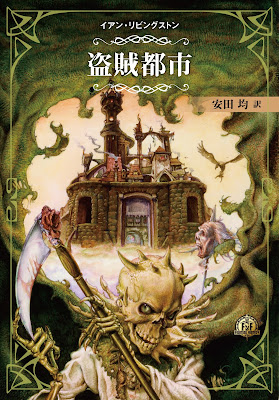Seeing as it's St David's Day in the UK, in honour of the patron saint of Wales, today on the official Fighting Fantasy blog we're celebrating the various dragons that have appeared in Fighting Fantasy gamebooks over the years.
So here we go, counting down from number ten to number one, but be warned - there are some spoilers ahead...
10. Pocket Dragon (FF51 Island of the Undead)Dragons are cool, right? So how cool would it be to have a dragon that you could keep in your pocket? Ice cold, right?
Pocket Dragon (and Stonewight), by Russ Nicholson.
9. Wyrm (Allansia)Not technically a dragon, but close enough. This monster of the icy wastes is encountered by the Heroes in the multi-player
Advanced Fighting Fantasy RPG adventure
A Darkness of Kaad.
Allansia cover (featuring the Wyrm) by John Sibbick.
8. Skeletal Dragon (FF54 Legend of Zagor)Even though it's dead, this dragon is still deadly. (
Legend of Zagor also features a Wyvern and a War Dragon!)
Skeletal Dragon, by Martin McKenna.
7. Stone Sentinels (FF39 Fangs of Fury)Six massive stone dragons guard the tiny kingdom of Zamarra. But the fire they breathe has been extinguished. And now Zamarra is under siege by Ostragoth the Grim and his swarming hordes...
6. Brimstone Dragon (The Tasks of Tantalon)The keeper of a treasure hoard in the Old World kingdom of Gallantaria. But how many gold pieces were really in that hoard?
Brimstone Dragon, by Stephen Lavis.
5. Wyvern (FF3 The Forest of Doom)Also technically not a dragon, but the Wyvern's dramatic appearance towards the end of
The Forest of Doom made a big impression on many a young role-player.
Wyvern, by Malcolm Barter.
4. White Dragon (FF9 Caverns of the Snow Witch)One of the guardians of the Snow Witch's Crystal Caves.
White Dragon, by Edward Crosby and Gary Ward.
3. Titan (Titan - The Fighting Fantasy World)The name given to the dragon that appears on the cover of
Titan - The Fighting Fantasy World. This particular dragon was even immortalised as a sculpture, to mark Fighting Fantasy's 10th anniversary, by Clarecraft.
Dragonspell, by Chris Achilleos.
2. The Night Dragon (FF52 Night Dragon)One of the Ancient Dragons, corrupted by Evil, that fought against the gods themselves. A dragon so bad-ass that even after it's been killed its head grows legs and attacks you!
The Night Dragon, by Tony Hough.
1. The Dragon of Firetop Mountain (FF1 The Warlock of Firetop Mountain)The original and still the best. A memorable encounter near the climax to
The Warlock of Firetop Mountain, for many young readers this was the first dragon they had ever gone toe-to-toe with in a role-playing game. And it has appeared on the cover of every edition of
The Warlock of Firetop Mountain since the book was first published in 1982.
Dragon, by Russ Nicholson.
Bubbling under...Kilanirax, Lord of all Dragons, and the Dream Dragon (both from FF51
Night Dragon), the War Dragon (from FF54
Legend of Zagor), the Sea Dragon (FF19
Demons of the Deep), the golden dragon statue from FF60
Eye of the Dragon, and the dragon, from the Dragon Cover Format, by Chris Achilleos.
Eye of the Dragon, by Martin McKenna.
Dragon Cover Format, by Chris Achilleos.
What do you think of our list? Are there any egregious omissions that you believe should have made it into the Top Ten?
Let us know in the comments below and also let us know if there are any other Fighting Fantasy Top Tens you would like to see.































